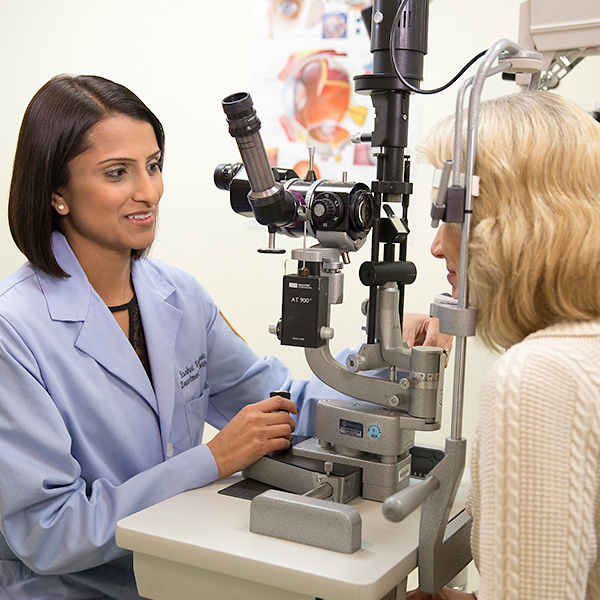Optic Neuritis
Overview and Facts about Optic Neuritis
Optic neuritis is an inflammation in the eye that damages the optic nerve, which is responsible for transmitting images from your eye to your brain.
This inflammation is most commonly associated with multiple sclerosis (MS), and for 15 to 20% of people with MS, it is the first sign of the disease.
Signs and Symptoms of Optic Neuritis
The most common signs and symptoms of optic neuritis include:
- Pain or a dull ache behind the eye that feels worse when moving the eye
- Vision loss that affects just one eye. The degree of vision loss can vary among individuals, and it can come on over the course of a few hours or days. In most cases, vision returns within a few weeks or months.
- Loss of side vision – also called “field vision”
- Seeing flashing or flickering lights with eye movement
- Changing color perception – optic neuritis can cause colors to appear less vivid
Causes and Risk Factors of Optic Neuritis
The exact cause of optic neuritis is not known, but this ophthalmology condition is often associated with MS. This is because MS is a disease that causes inflammation and damage to nerves in the brain and spinal cord.
Similarly, neuromyelitis optics is another autoimmune condition associated with optic neuritis. It causes inflammation in the optic nerve and spinal cord.
Other risk factors for optic neuritis include:
- Infections
- Certain medications, including some antibiotics
- Other diseases like sarcoidosis and lupus
- Age – optic neuritis most often affects adults ages 20 to 40
There are also some diseases that can lead to acute angle closure glaucoma, which include:
- Tumors
- Diabetic retinopathy
- Cataracts
- Ectopic lens
- Uveitis
- Ocular ischemia
Overall, acute angle closure glaucoma is three times more likely to occur in women than men. It is also more likely to occur in Asians or Eskimos due to the narrower angle in their eyes.
Tests and Diagnosis of Optic Neuritis
Because it is an ophthalmology condition, a doctor will most likely use the following eye tests to diagnose optic neuritis:
- Routine eye exam, which just involves checking your vision and ability to see color
- Ophthalmoscopy, which is when the doctor shines a light into your eyes to check for swelling of the structures in the back of the eye
- Pupillary light reaction test, which is when the doctor checks to see how your pupil responds to light. Pupils in individuals with optic neuritis don’t constrict as much.
In some cases, further testing might be needed to confirm a diagnosis. These can include an MRI, a blood test, or a visual evoked response test.
Treatment and Care for Optic Neuritis
Optic neuritis usually improves on its own, with the full return of vision within a year. Treatment with steroid medications may speed up vision recovery after optic neuritis.
In the most severe cases, plasma exchange treatment could help restore vision, but studies have not proven that this treatment is always effective. Your doctor may recommend taking certain medications to help prevent MS, such as beta interferons.

Request an Appointment
Whether you are seeking routine eye care or have a specific vision issue, our team treats a wide range of eye diseases and conditions, including cataracts, glaucoma, macular degeneration and strabismus. Schedule an appointment today.
Schedule a Telehealth Appointment
